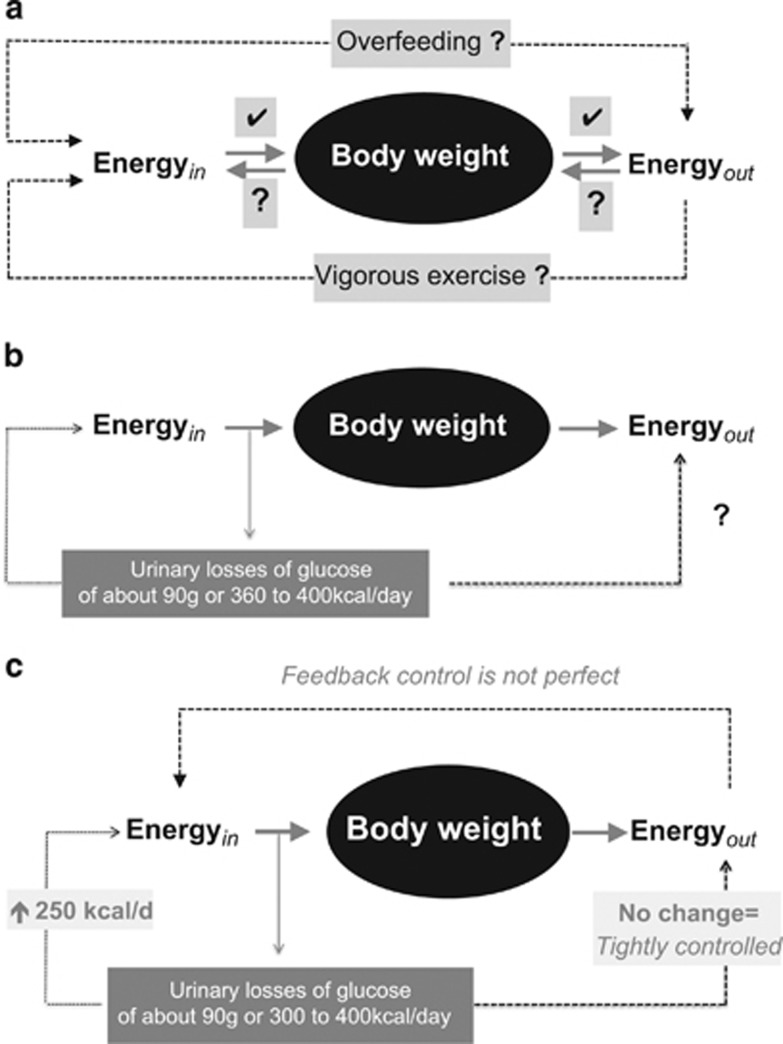Figure 1.
Schematic presentation of the energy balance paradigm. (a) Body weight follows the difference between EI (energyin) and EE (energyout). With increasing body weight energyout increases. By contrast, reducing body weight decreases energyout. Vice versa there are no effects of increases in energyout by strenuous exercise on body weight. An increase in body weight does not automatically result in a compensatory decrease in energyin. Body weight-independent feedback controls between energyout and energyin had been proposed but have only been shown for underfeeding. (b) Pharmacological inhibition of the sodium-glucose co-transporter 2 (SGLT2) results in glucosuria of about 90 g/day. To test the energy balance paradigm the effects of SGLT2-inhibition on energyin and energyout has to be tested. (c) SGLT2-inhibition resulted in an increase in energyin with no changes in energyout. However, an unchanged EE the increase in energyin does not match urinary energy losses resulting in a negative energy balance. See Ferrannani et al. 43 and text for further details.

